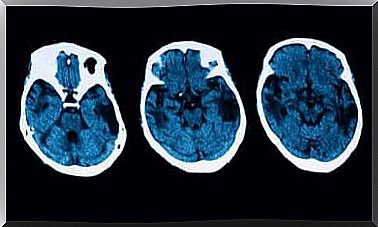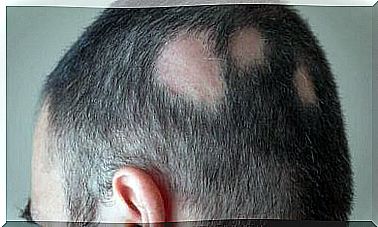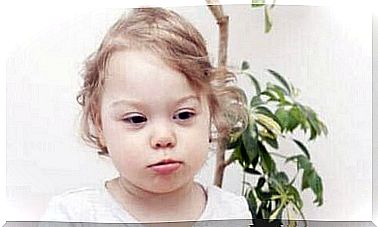Staphylococcal Scalded Skin Syndrome
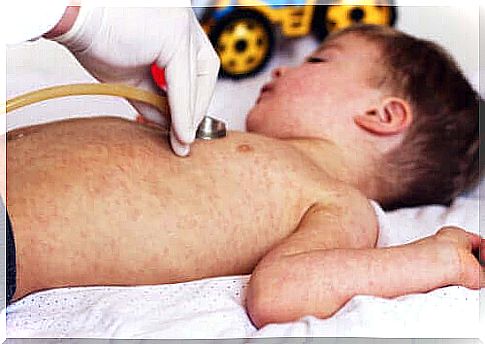
Staphylococcal scalded skin syndrome (SSSS) is a skin condition that occurs in response to a staphylococcal skin infection. Its main feature is the formation of blisters and subsequent peeling of the skin.
This problem mainly affects infants or children under 6 years of age. It is very rare for staphylococcal scalded skin syndrome to occur in adults unless there is a deficiency of the immune system or kidney failure.
What causes scalded skin syndrome?
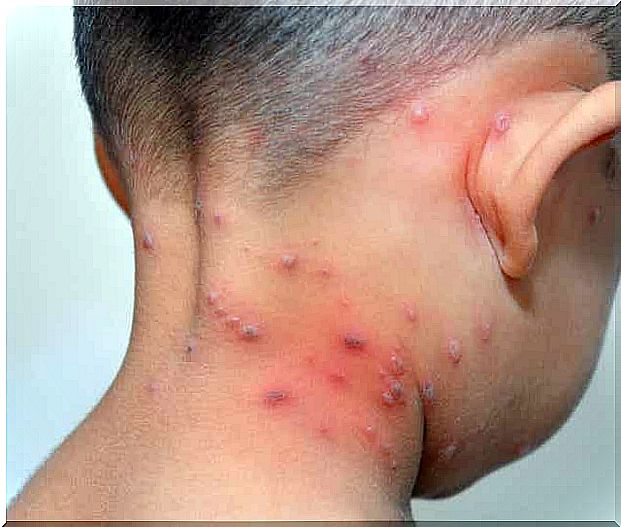
Scalded skin syndrome results from a skin infection caused by bacteria of the staphylococcal family. In most cases, Staphylococcus aureus is the infectious agent.
These microorganisms secrete a toxic substance that attacks the skin, causing the top layer of the epidermis to separate from the rest of the skin. As a result, the blisters burst and the skin looks burnt.
Usually, the individual has an initial infectious focus that goes undetected. Once it starts, the syndrome develops rapidly. However, sometimes this happens a few days after the initial infection that caused it.
This syndrome is contagious. Staphylococcal infections have increased worldwide since the 1970s. It is estimated that staphylococcus aureus is present in 30-50% of adults.
What are the characteristic symptoms?
Although scalded skin syndrome has several characteristic symptoms, it is common for each child to experience them differently. Usually the first manifestation is fever, which is accompanied by reddening of the skin.
It usually starts with an isolated sore where a scab forms. In newborns, the ulcer usually appears in the diaper area or near the umbilical stump. At the same time, in older children it is almost always in the face. In adults, however, it can start on any part of the body.
The ulcer progresses and turns scarlet in color within 24 hours. Soon after, fluid-filled blisters begin to form. These open very easily and then give the skin a moist and burnt appearance, as if there was a burn. Other common symptoms include:
- Pain when touched in the affected area.
- Chills.
- Feeling of weakness.
- Loss of fluids.
- Nikolsky’s sign. The superficial layers of the skin separate from the deeper layers simply by rubbing them with light pressure. Within two or three days, the entire surface of the skin is affected.
What treatment is there for this syndrome?

The diagnosis of scalded skin syndrome is made on the basis of the clinical picture and the detection of the toxin. Sometimes a skin biopsy is also needed to confirm the disease, which with its early manifestations is very similar to scarlet fever, erythema multiforme, Kawasaki disease and others.
Once the doctor confirms the diagnosis, treatment usually needs to be in the hospital. The treatment of this disease is similar to that of burns and is usually done in the burn department. Most often, professionals take the following measures:
- Administration of Staphylococcal Antibiotics. By oral or intravenous administration, depending on the condition of each patient. Its function is to prevent any type of infection.
- Administration of intravenous fluids. The patient loses a lot of body fluids through the open skin. This therefore requires measures to prevent possible dehydration.
- Skin protection measures. These include the use of creams and ointments to strengthen the skin barrier function. Moisturizers are also needed.
- Relieving measures. These involve applying cold compresses to the skin for the purpose of relieving pain.
Treatment may vary depending on the patient’s age, general health, severity of condition, drug tolerance, expectations, or preferences. Usually the skin starts to heal 10 days after starting treatment.
How do you deal with scalded skin syndrome?
If the child or adult is treated in a timely manner, there are generally no complications. The main risk, however, is that a deeper skin infection can develop: cellulitis. There is also concern that the infectious condition could worsen and reach the bloodstream, causing blood poisoning.
At the same time, patients are at risk of dehydration or electrolyte imbalance. Fever also requires adequate attention, especially in infants. However, if the child or adult receives an early diagnosis or treatment, the outcome is usually favorable. However, scalded skin syndrome can lead to death if the patient does not receive proper treatment.
In short, in case of febrile blisters and/or the other symptoms mentioned above, you should immediately consult a doctor.



